Abstract
STUDY OBJECTIVE--The aim was to examine disease concurrence, using diabetes mellitus as an ullustrative example. DESIGN--The study involved a general practice morbidity survey, conducted over 12 months in 1981-82. All patients who consulted their general practitioners with a diagnosis of diabetes mellitus (type 1 or type 2) were identified and the number of these who consulted with additional morbidities were counted for each rubric of the Royal College of General Practitioners' modification of the International Classification of Disease. These observed numbers were then compared with expected numbers calculated from the total non-diabetic population after standardisation by age. Standardised person consulting ratios (SPCR) were derived and the 99% confidence intervals (CI) surrounding these values calculated. SETTING--This was a national survey involving the whole of England and Wales. PATIENTS--The study involved 280,000 patients from selected general practices, of whom 953 males and 1035 females consulted their general practitioners with diabetes. MEASUREMENTS AND MAIN RESULTS--In an examination of 80 disease rubrics in the diabetic population in which there were at least 20 observed or expected cases, there were 34 among males and 28 among females in which there were increased values of the SPCR, and none in which the SPCR was decreased. SPCRs were high for infections generally (bacterial, fungal, and viral) and particularly so for cardiovascular disorders and for hypothyroidism in males. Though SPCRs for upper respiratory infections were increased, those for asthma and hay fever were not. SPCRs for neoplasms as a group were not raised. CONCLUSION--By confirming other work and widely held clinical opinion, this study has shown the potential of this data base for the examination of disease concurrence.
Full text
PDF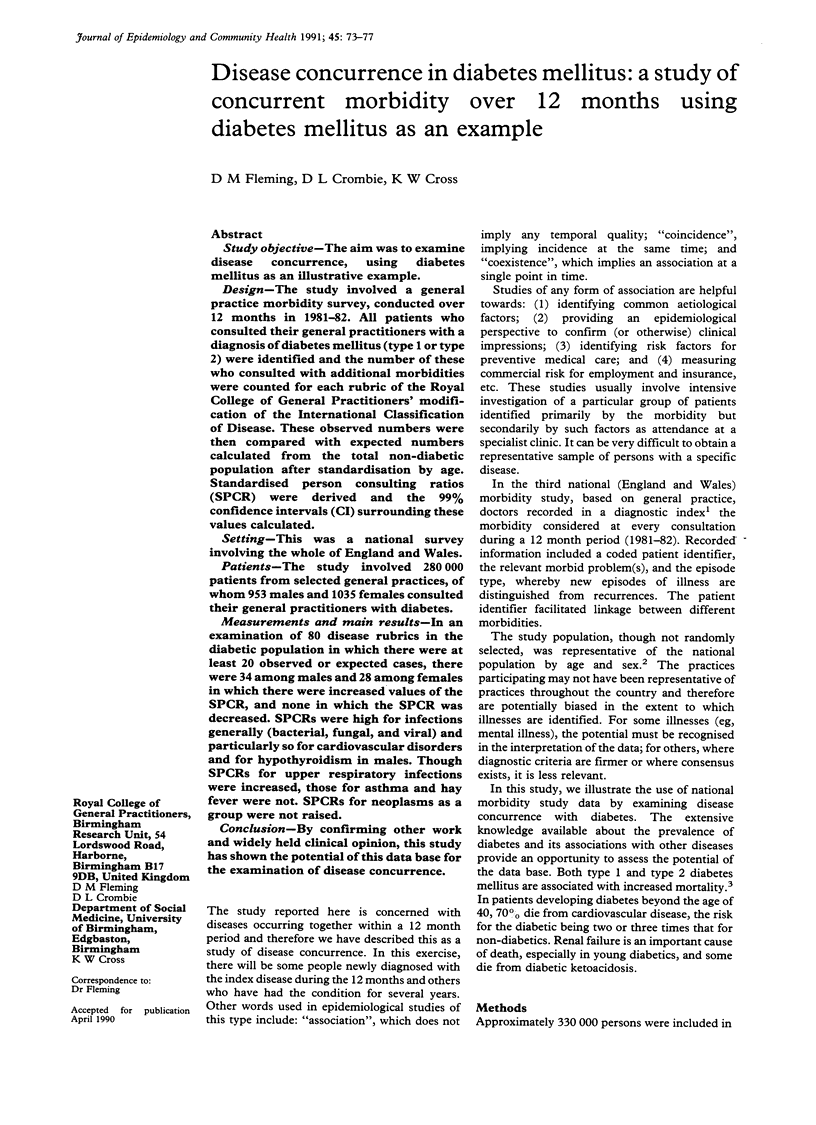
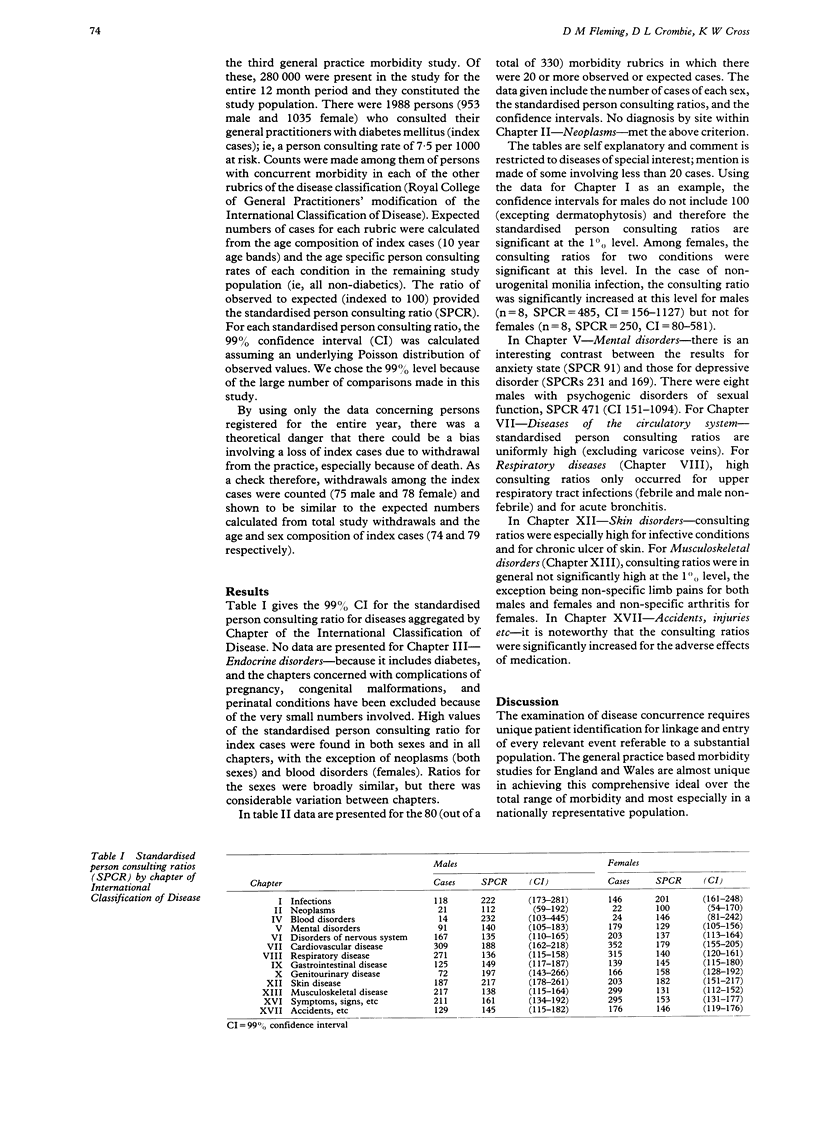
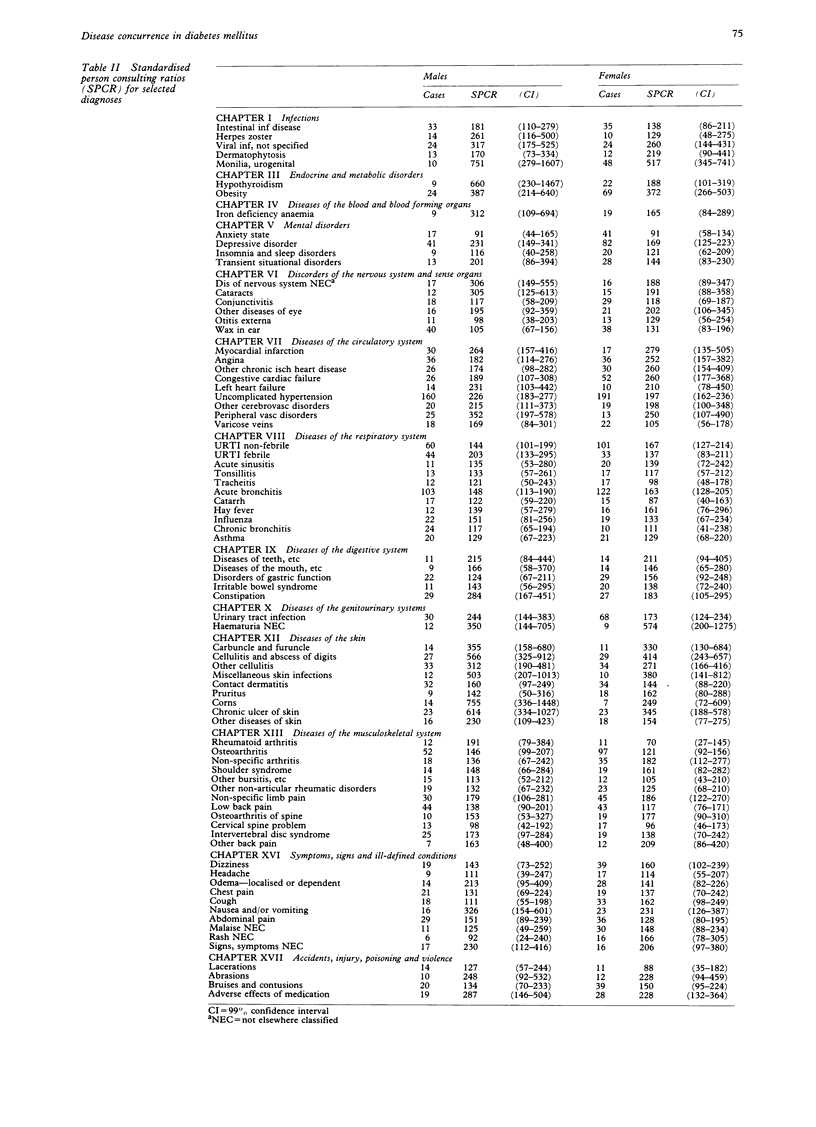
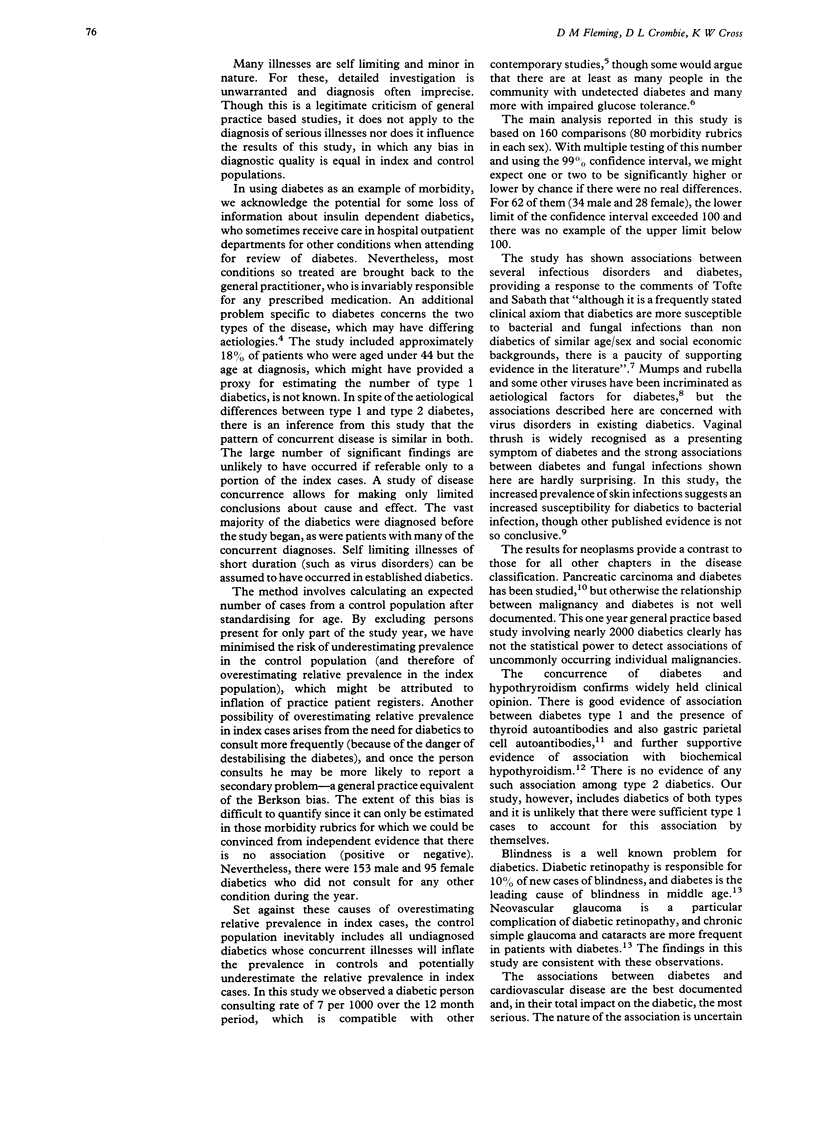
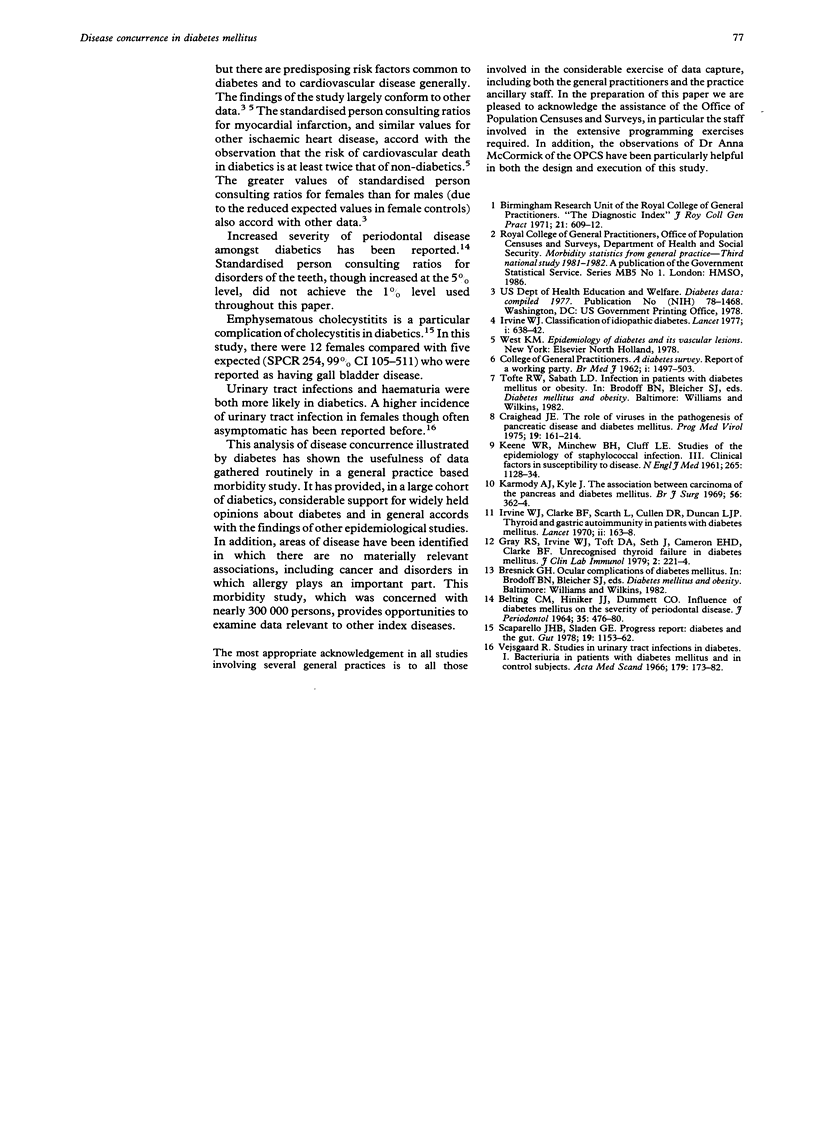
Selected References
These references are in PubMed. This may not be the complete list of references from this article.
- Craighead J. E. The role of viruses in the pathogenesis of pancreatic disease and diabetes mellitus. Prog Med Virol. 1975;19:161–214. [PubMed] [Google Scholar]
- Irvine W. J., Clarke B. F., Scarth L., Cullen D. R., Duncan L. J. Thyroid and gastric autoimmunity in patients with diabetes mellitus. Lancet. 1970 Jul 25;2(7665):163–168. doi: 10.1016/s0140-6736(70)92531-6. [DOI] [PubMed] [Google Scholar]
- Irvine W. J. Classification of idiopathic diabetes. Lancet. 1977 Mar 19;1(8012):638–642. doi: 10.1016/s0140-6736(77)92071-2. [DOI] [PubMed] [Google Scholar]
- KEENE W. R., MINCHEW B. H., CLUFF L. E. Studies of the epidemiology of staphylococcal infection. III. Clinical factors in susceptibility to staphylococcal disease. N Engl J Med. 1961 Dec 7;265:1128–1134. doi: 10.1056/NEJM196112072652302. [DOI] [PubMed] [Google Scholar]
- Karmody A. J., Kyle J. The association between carcinoma of the pancreas and diabetes mellitus. Br J Surg. 1969 May;56(5):362–364. doi: 10.1002/bjs.1800560512. [DOI] [PubMed] [Google Scholar]
- Scarpello J. H., Sladen G. E. Diabetes and the gut. Gut. 1978 Dec;19(12):1153–1162. doi: 10.1136/gut.19.12.1153. [DOI] [PMC free article] [PubMed] [Google Scholar]
- Vejlsgaard R. Studies on urinary infection in diabetics. I. Bacteriuria in patients with diabetes mellitus and in control subjects. Acta Med Scand. 1966 Feb;179(2):173–182. [PubMed] [Google Scholar]


